Sep 6
/
Kamilia Seredocha
20 Essentials For A First Aid Kit In Your Car
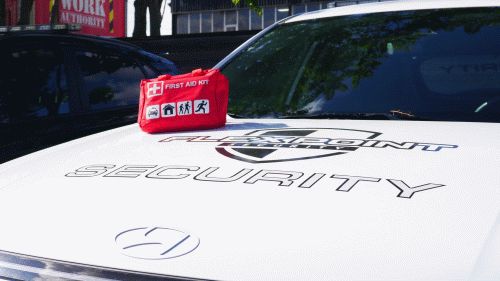
When preparing for emergencies, it is imperative to have a first aid kit in your vehicle. Whether you're commuting to work, taking a road trip, or simply running errands, accidents and unexpected situations can happen.
A car first aid kit is not just a luxury—it's essential to ensuring safety on the road. Together we'll explore the must-have items for your vehicle's first aid kit, why they're crucial, and how to customize your kit to meet your specific needs.
Why You Need a First Aid Kit in Your Car
Accidents are inevitable, and being prepared can significantly affect how you respond to an emergency. Essential items for a car ensure that you have immediate access to crucial supplies in case of a minor injury or a more severe situation.
You may lessen the severity of injuries and improve outcomes by providing primary care with the correct materials while waiting for expert medical aid.
Basic First Aid Kit Items
When assembling a first aid kit for your car, start with the basics. These items are the foundation of any effective emergency car kit and are crucial for addressing various injuries and medical situations.
1. Adhesive Bandages (Assorted Sizes)
These are essential for covering minor cuts, blisters, and abrasions. Various sizes ensure you have the proper bandage for different injuries. Having a selection also means you'll be better prepared for treating cuts on other body parts, where a specific size may be more effective.
2. Sterile Gauze Pads
Gauze pads are versatile and can clean wounds, apply pressure to stop bleeding, or serve as a protective covering for more significant cuts. They are also crucial for covering wounds too large for regular bandages, ensuring the injured area remains clean and protected from infection.
3. Adhesive Tape
An essential first aid kit component, sticky tape fastens gauze pads or bandages in position. It's important to choose a tape that is durable and sticky enough to hold dressings in place but gentle on the skin to avoid irritation.
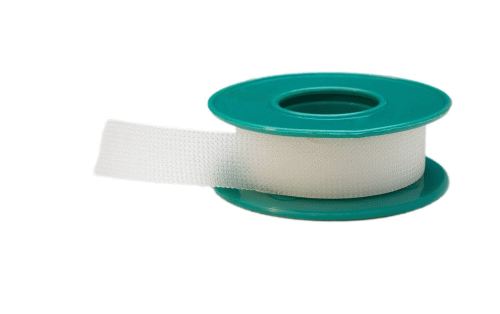
4. Antiseptic Wipes
These wipes are essential for cleaning wounds and preventing infections. Keeping the wound clean is the first step in proper wound care. They are beneficial in outdoor settings where access to clean water is limited, ensuring that dirt or bacteria is quickly removed from the injury site.
5. Antibiotic Ointment
Antibiotic ointment to a wound after cleaning can help prevent infection and promote healing. It generates a protective barrier over the wound, reducing the chances of bacteria entering the body and speeding up the healing process.
6. Tweezers
Tweezers help remove splinters, ticks, or other foreign objects from the skin. Precision is vital in eliminating such objects without causing further damage, making tweezers indispensable in any first aid kit.
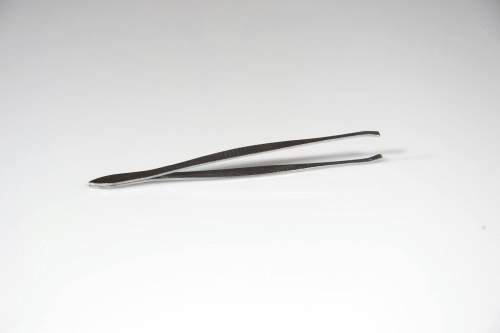
7. Scissors
A good pair of medical scissors can cut tape, gauze, or clothing if necessary. Scissors designed for medical use typically have blunt ends to prevent accidental injury, making them safer for emergencies.
8. Hydrocortisone Cream
This cream helps treat minor skin irritations, insect bites, or allergic reactions. It's handy for reducing swelling and itching, providing quick relief in situations where discomfort could become a distraction or lead to further irritation.
9. Pain Relievers
To alleviate discomfort caused by injuries or headaches, having over-the-counter pain medicines such as ibuprofen or acetaminophen in your pack is a good idea. These medications also help reduce inflammation, making them helpful in treating sprains or muscle strains during long drives.

10. Instant Cold Packs
Cold packs help reduce swelling and numb pain in the event of a sprain or bruise. Their convenience lies in their immediate usability—just squeeze to activate—making them perfect for situations where ice is not readily available.
11. Elastic Bandage
Wrapping sprained joints or damaged limbs with an elastic bandage can give support. These dressings are adjustable and can provide compression, which can help reduce edema and give stability to injured areas while you seek additional medical attention.
12. Medical Gloves
Wearing gloves when providing first aid helps prevent contamination and protects the caregiver and the injured person. Using gloves is especially important when dealing with open wounds or bodily fluids, significantly reducing the risk of transmitting infections.
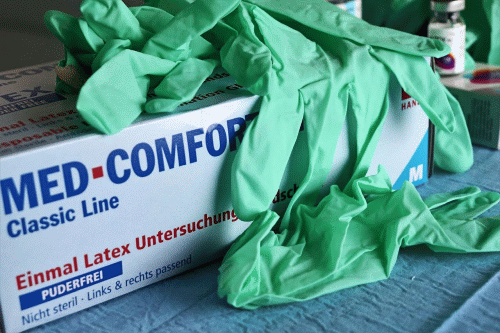
13. CPR Face Shield
A face shield provides a barrier when performing CPR, reducing the risk of cross-contamination. It is a crucial tool that allows you to safely perform life-saving techniques, especially when the injured person may have an unknown medical history.
14. Thermometer
A digital thermometer might help monitor your body temperature if you have heat exhaustion or fever. Accurate temperature readings are essential for assessing whether someone might be developing an infection or is suffering from heat-related illnesses.
15. Burn Cream
Burn cream or gel can relieve minor burns and help prevent infection. It cools the affected area, providing immediate pain relief and helping prevent further skin damage.
16. Eye Wash Solution
An eye wash solution can flush out irritants from the eyes. This is particularly important in environments where dust, debris, or chemicals might get into your eyes, ensuring they are quickly and effectively cleaned.
17. First Aid Manual
A simple first aid guidebook or guide on hand might be helpful in an emergency. This manual can provide step-by-step instructions, ensuring that even those with minimal first aid training can perform necessary procedures correctly.
18. Emergency Blanket
An emergency blanket helps retain body heat and is helpful in situations where someone may be in shock or exposed to cold temperatures. It's compact and lightweight, making it an easy addition to your first aid kit, yet incredibly effective in preventing hypothermia.
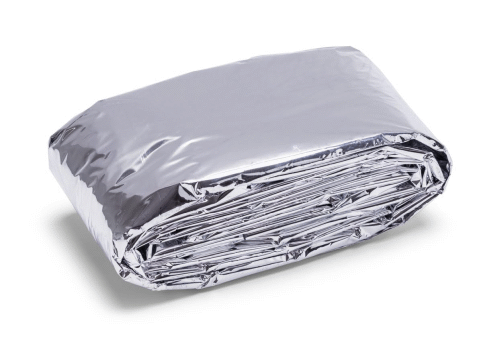
19. Resealable Plastic Bags
These can preserve wet little things, such as abandoned gloves, bandages, or other objects. They're also helpful for safely storing used or contaminated items until they can be appropriately disposed of, helping to maintain a clean and organized first aid kit.
20. Flashlight with Extra Batteries
A flashlight is essential for providing light in low-visibility situations, mainly if an emergency occurs at night. Extra batteries ensure that your flashlight will work when you need it most, whether searching for supplies in the dark or signalling for help.
Customizing Your Car First Aid Kit
While the above items cover the basics, your first aid kit should be tailored to meet your specific needs and those of your passengers. Here are some tips on customizing your kit:
- Consider Family Members: If you travel with children or elderly family members, include items that cater to their needs, such as children's pain relievers, medications for chronic conditions, or additional bandages for delicate skin.
- Allergy Considerations: It is crucial if anyone in your family has known allergies, including an epinephrine auto-injector (EpiPen) or antihistamines.
- Personal Medications: Include a supply of any personal medications you or your family members may need, especially if you are going on a long trip.
- Travel Specifics: Bring extra water purification tablets and a snake bite kit if you're going to a remote place.
- Weather Considerations: Depending on the climate, you might need to add sunscreen, insect repellent, or hand warmers.
Maintenance and Storage Tips
A safety kit is only as good as its condition, so regular maintenance is essential. Check your kit every six months to ensure all items are still in good condition, and replace anything that has expired. Be mindful of how you store your first aid kit in your car.
It should be easily accessible in an emergency, so avoid burying it under other items in your trunk. To prevent spoilage or water damage, store it in a watertight container.
It should be easily accessible in an emergency, so avoid burying it under other items in your trunk. To prevent spoilage or water damage, store it in a watertight container.
Conclusion: Be Prepared for Any Emergency
By including the essentials and customizing your kit to meet your needs, you can travel with peace of mind, knowing you're ready to handle minor injuries or more severe situations.
Remember, the best time to prepare for an emergency is before it happens—so take the time to build or update your car first aid kit today.


